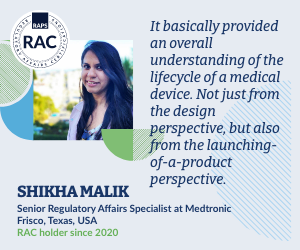FDA finalizes guidance on adjusting for covariates in randomized trials
![]() Regulatory News | 30 May 2023 |
Regulatory News | 30 May 2023 |
The US Food and Drug Administration (FDA) on Friday released a final guidance addressing how sponsors can adjust for covariates in analyzing randomized clinical trials for drugs and biological products.
FDA states that “the main focus of the guidance is on the use of prognostic baseline covariates to improve statistical efficiency for estimating and testing treatment effects.” It covers general considerations for covariate adjustment using linear and nonlinear models.
“In many randomized controlled trials, the primary analysis used to estimate treatment effects of a new drug might not adjust for baseline covariates (through what is termed an unadjusted analysis). However, incorporating prognostic baseline covariates in the design and analysis of clinical trial data can result in a more efficient use of data to demonstrate and quantify the effects of treatment,” FDA writes in the guidance.
Thes guidance does not address the use of covariates to control for confounding variables in non-randomized trials, nor does it cover the use of covariates for missing outcome data or address Bayesian methods for covariate adjustment.
The final guidance includes minor revisions from the draft issued on May 21, 2021. (RELATED: FDA updates guidance on covariate treatment in clinical trials, Regulatory Focus 21 May 2021).
Some of the changes include a clarification in the background section that the International Council on Harmonisation’s E9(R1) guidance on estimands is consistent with the principles in this guidance, in response to a request from Novartis and Merck which requested the addition. The 2021 draft guidance stated that the E9 guidance on statistical principles for clinical trials applied but did not include the E9(R1) guidance.
The guidance also addresses nominal standard errors in the linear models section. It states that, “nominal standard errors are often the default method in most statistical software packages. Even if the model is incorrectly specified, they are acceptable in two arm trials with 1:1 randomization. However, in other settings, these standard errors can be inaccurate when the model is misspecified. Therefore, the agency recommends that sponsors consider use of a robust standard error method such as the Huber-White ‘sandwich’ standard error when the model does not include treatment by covariate interactions.”
The guidance also adds in the “general considerations” section that sponsors should discuss with FDA their proposals to use “complex” covariate randomization data.
FDA final guidance
Notice
FDA states that “the main focus of the guidance is on the use of prognostic baseline covariates to improve statistical efficiency for estimating and testing treatment effects.” It covers general considerations for covariate adjustment using linear and nonlinear models.
“In many randomized controlled trials, the primary analysis used to estimate treatment effects of a new drug might not adjust for baseline covariates (through what is termed an unadjusted analysis). However, incorporating prognostic baseline covariates in the design and analysis of clinical trial data can result in a more efficient use of data to demonstrate and quantify the effects of treatment,” FDA writes in the guidance.
Thes guidance does not address the use of covariates to control for confounding variables in non-randomized trials, nor does it cover the use of covariates for missing outcome data or address Bayesian methods for covariate adjustment.
The final guidance includes minor revisions from the draft issued on May 21, 2021. (RELATED: FDA updates guidance on covariate treatment in clinical trials, Regulatory Focus 21 May 2021).
Some of the changes include a clarification in the background section that the International Council on Harmonisation’s E9(R1) guidance on estimands is consistent with the principles in this guidance, in response to a request from Novartis and Merck which requested the addition. The 2021 draft guidance stated that the E9 guidance on statistical principles for clinical trials applied but did not include the E9(R1) guidance.
The guidance also addresses nominal standard errors in the linear models section. It states that, “nominal standard errors are often the default method in most statistical software packages. Even if the model is incorrectly specified, they are acceptable in two arm trials with 1:1 randomization. However, in other settings, these standard errors can be inaccurate when the model is misspecified. Therefore, the agency recommends that sponsors consider use of a robust standard error method such as the Huber-White ‘sandwich’ standard error when the model does not include treatment by covariate interactions.”
The guidance also adds in the “general considerations” section that sponsors should discuss with FDA their proposals to use “complex” covariate randomization data.
FDA final guidance
Notice
© 2025 Regulatory Affairs Professionals Society.













